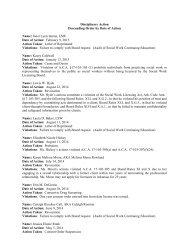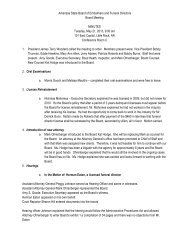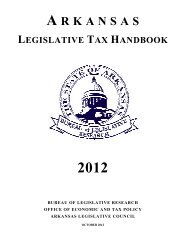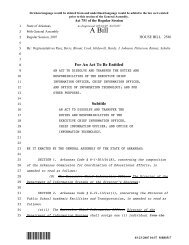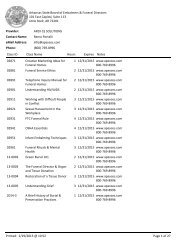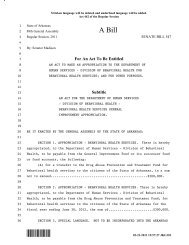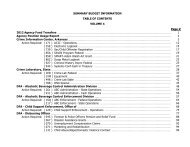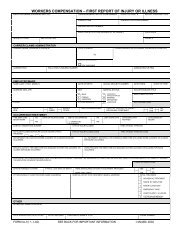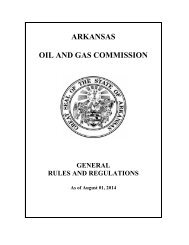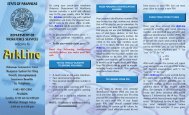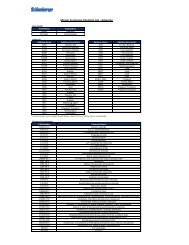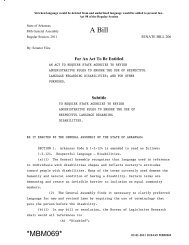CHECKLIST FOR ECOLOGICAL ASSESSMENT/SAMPLING ...
CHECKLIST FOR ECOLOGICAL ASSESSMENT/SAMPLING ...
CHECKLIST FOR ECOLOGICAL ASSESSMENT/SAMPLING ...
- No tags were found...
Create successful ePaper yourself
Turn your PDF publications into a flip-book with our unique Google optimized e-Paper software.
<strong>CHECKLIST</strong> <strong>FOR</strong> <strong>ECOLOGICAL</strong> <strong>ASSESSMENT</strong>/<strong>SAMPLING</strong>IntroductionThe checklist that follows provides guidance in making observations for an ecological assessment. It isnot intended for limited or emergency response actions (e.g., removal of a few drums) or for purelyindustrial settings with no discharges. The checklist is a screening tool for preliminary site evaluationand may also be useful in planning more extensive site investigations. It must be completed asthoroughly as time allows. The results of the checklist will serve as a staring point for the collection ofappropriate biological data to be used in developing a response action. It is recognized that certainquestions in this checklist are not universally applicable and that site-specific conditions will influenceinterpretation. Therefore, a site synopsis is requested to facilitate final review of the checklist by atrained ecologist.ChecklistThe checklist has been divided into sections that correspond to data collection methods and ecosystemtypes. These sections are:ISite DescriptionIA.Summary of Observations and Site SettingIITerrestrial Habitat ChecklistIIA.IIB.IIC.IID.WoodedShrub/ScrubOpen FieldMiscellaneousIIIIVVAquatic Habitat Checklist – Non-Flowing SystemsAquatic Habitat Checklist – Flowing SystemsWetlands Habitat Checklist
I. SITE DESCRIPTIONChecklist for Ecological Assessment/Sampling1. Site Name: _________________________________________________________________Location: ______________________________________________________________________________________________________________________________________________County: __________________ City: __________________________ State: ______________2. Latitude: ____________________________ Longitude: _______________________________3. What is the approximate area of the site: ___________________________________________4. Is this the first site visit? 9 Yes 9 No. If no, attach trip report of previous site visit(s), if available.Date(s) of previous site visit(s): ___________________________________________________5. Please attach to the checklist USGS topographic map(s) of the site, if available.6. Are aerial or other site photographs available? 9 Yes 9 No. If yes, please attach any availablephoto(s) to the site map at the conclusion of this section.
7. The land use of the site is: The area surrounding the site is:_____________________ mile radius_____ % Urban_____ % Rural_____ % Urban_____ % Rural_____ % Residential _____ % Residential_____ % Industrial (___ light ___ heavy)_____ % Agricultural(Crops: _____________________________)_____ % Recreational(Describe: note if it is a park etc.)_____________________________________________________________________________ % Undisturbed_____ % Other_____ % Industrial (___light ____heavy)_____ % Agricultural(Crops: _____________________________)_____ % Recreational(Describe: note if it is a park, etc.)_______________________________________________________________________________ % Undisturbed_____ % Other8. Has any movement of soil taken place at the site? 9___ Yes 9___ No. If yes, please identify themost likely cause of this disturbance:9 Agricultural Use 9 Heavy Equipment 9 Mining9 Natural Events 9 Erosion 9 OtherPlease describe:
9. Do any potential sensitive environmental areas exist adjacent to or in proximity to the site, e.g.,Federal and State parks, National and State monuments, wetlands, prairie potholes?Remember, flood plains and wetlands are not always obvious; do not answer “no” withoutconfirming information.Please provide the source(s) of the information used to identify these sensitive areas, andindicate their general location on the site map.10. What type of facility is located at the site?9 Chemical 9 Manufacturing 9 Mixing 9 Waste disposal9 Other (specify)______________________________________________________________11. What are the suspected contaminants of concern at the site? If know, what are the maximumconcentration levels?12. Check any potential routes of off-site migration of contaminants observed at the site:9 Swales 9 Depressions 9 Drainage ditches9 Runoff 9 Windblown particulates 9 Vehicular traffic9 Other (specify)______________________________________________________________13. If known, what is the approximate depth to the water table?____________________________14. Is the direction of surface runoff apparent from site observations? 9 yes 9 no. If yes, to which ofthe following does the surface runoff discharge? Indicate all that apply.9 Surface water 9 Groundwater 9 Sewer 9 Collection impoundment15. Is there a navigable waterbody or tributary to a navigable waterbody? 9 yes 9 no
16. Is there a waterbody anywhere on or in the vicinity of the site? If yes, also complete Section III:Aquatic Habitat Checklist – Non-Flowing Systems and/or Section IV: Aquatic Habitat Checklist –Flowing Systems.9 yes (approx. distance ______________________) 9 no17. Is there evidence of flooding? 9 yes 9 no Wetlands and flood plains are not always obvious; donot answer “no” without confirming information. If yes, complete Section V: Wetland HabitatChecklist.18. If a field guide was used to aid any of the identifications, please provide a reference. Also,estimate the time spent identifying fauna. [Use a blank sheet if additional space is needed fortext.]19. Are any threatened and/or endangered species (plant or animal) known to inhabit the area of thesite? 9 yes 9 no If yes, you are required to verify this information with the U.S. Fish and WildlifeService. If species’ identities are known, please list them next.20. Record weather conditions at the time this checklist was prepared:Date: _______________________________ Temperature (EC/EF)__________ Wind (direction/speed)__________ Normal daily high temperature__________ Precipitation (rain,snow)__________ Cloud cover
IA.SUMMARY OF OBSERVATIONS AND SITE SETTINGCompleted by ___________________________________ Affiliation ___________________________Additional Preparers_________________________________________________________________Site Manager_______________________________________________________________________Date___________________
IIIIA.TERRESTRIAL HABITAT <strong>CHECKLIST</strong>WOODED1. Are there any wooded areas at the site? 9 yes 9 no If no, go to Section IIB: Shrub/Scrub.2. What percentage or area of the site is wooded? ( ________ % _________ acres). Indicate thewooded area on the site map which is attached to a copy of this checklist. Please identify whatinformation was used to determine the wooded area of the site.3. What is the dominant type of vegetation in the wooded area? (Circle one:Evergreen/Deciduous/Mixed) Provide a photograph, if available.Dominant plant, if known: __________________________________________________4. What is the predominant size of the trees at the site? Use diameter at breast height.9 0 - 6 in. 9 6 - 12 in. 9 >12 in.5. Specify type of understory present, if known. Provide a photograph, if available.IIB.SCHRUB/SCRUB1. Is shrub/scrub vegetation present at the site? 9 yes 9 no If no, go to Section IIC: Open Field.2. What percentage of the site is covered by scrub/shrub vegetation? ( _______ % _____ acres).Indicate the areas of shrub/scrub on the site map. Please identify what information was used todetermine this area.3. What is the dominant type of scrub/shrub vegetation, if known? Provide a photograph, ifavailable.4. What is the approximate average height of the scrub/shrub vegetation?9 0 - 2 ft. 9 2 - 5 ft. 9 > 5 ft.
5. Based on site observations, how dense is the scrub/shrub vegetation?9 Dense 9 Patchy 9 SparseIIC.OPEN FIELD1. Are there open (bare, barren) field areas present at the site? 9 yes 9 no If yes, please indicatethe type below:9 Prairie/plains 9 Savannah 9 Old field 9 Other (specify) _________________2. What percentage of the site is open field? ( __________ % _______ acres). Indicate the openfields on the site map.3. What is/are the dominant plant(s)? Provide a photograph, if available.4. What is the approximate average height of the dominant plant? _________________________5. Describe the vegetation cover: 9 Dense 9 Sparse 9 PatchyIID.MISCELLANEOUS1. Are other types of terrestrial habitats present at the site, other than woods, scrub/shrub, andopen field? 9 yes 9 no If yes, identify and describe them below.2. Describe the terrestrial miscellaneous habitat(s) and identify these area(s) on the site map.
3. What observations, if any, were made at the site regarding the presence and/or absence ofinsects, fish, birds, mammals, etc.?4. Review the questions in Section I to determine if any additional habitat checklists should becompleted for this site.
IIINote:AQUATIC HABITAT <strong>CHECKLIST</strong>Aquatic systems are often associated with wetland habitats. Please refer to Section V, WetlandHabitat Checklist.1. What type of open-water, non-flowing system is present at the site?9 Natural (pond, lake)9 Artificially created (lagoon, reservoir, canal, impoundment)2. If known, what is the name(s) of the waterbody(ies) on or adjacent to the site?_________________________________________________________3. If a waterbody is present, what are its known uses (e.g., recreation, navigation, etc.)?4. What is the approximate size of the waterbody(ies)? ______________________ acre(s).5. Is any aquatic vegetation present? 9 yes 9 no If yes, please identify the type of vegetationpresent if known.9 Emergent 9 Submergent 9 Floating6. If known, what is the depth of the water? _______________________________________7. What is the general composition of the substrate? Check all that apply.9 Bedrock 9 Sand (coarse) 9 Muck (find/black)9 Boulder (>10 in.) 9 Silt (fine) 9 Debris9 Cobble (2.5 - 10 in.) 9 Marl (shells) 9 Detritus9 Gravel (0.1 - 2.5 in.) 9 Clay (slick) 9 Concrete9 Other (specify) _____________________________________________________________8. What is the source of water in the waterbody?9 River/Stream/Creek 9 Groundwater 9 Industrial discharge9 Surface runoff 9 Other (specify) ___________________________________
9. Is there a discharge from the site to the waterbody? 9 yes 9 no If yes, please describe thisdischarge and its path.10. Is there a discharge from the waterbody? 9 yes 9 no. If yes, and the information is available,identify from the list below the environment into which the waterbody discharges.9 River/Stream/Creek 9 onsite 9 offsite Distance ________________9 Groundwater 9 onsite 9 offsite9 Wetland 9 onsite 9 offsite Distance __________________9 Impoundment 9 onsite 9 offsite11. Identify any field measurements and observations of water quality that were made. For thoseparameters for which data were collected provide the measurement and the units of measurebelow:_____________________________________________________________________AreaDepth (average)Temperature (depth of the water at which the reading was taken) __________pHDissolved oxygenSalinityTurbidity (clear, slightly turbid, turbid, opaque) (Seecchi disk depth _________)Other (specify)12. Describe observed color and area of coloration.13. Mark the open-water, non-flowing system on the site map attached to this checklist.
14. What observations, if any, were made at the waterbody regarding the presence and/or absenceof benthic macroinvertebrates, fish, birds, mammals, etc.?
IVNote:AQUATIC HABITAT <strong>CHECKLIST</strong> – FLOWING SYSTEMSAquatic systems are often associated with wetland habitats. Please refer to Section V, WetlandHabitat Checklist.1. What type(s) of flowing water system(s) is (are) present at the site?9 River 9 Stream 9 Creek9 Dry wash 9 Arroyo 9 Brook9 Artificially created (ditch, etc.) 9 Intermittent Stream 9 Channeling9 Other (specify) ______________________________________________________________2. If known, what is the name of the waterbody? _______________________________________3. For natural systems, are there any indicators of physical alteration (e.g. channeling, debris,etc.)? 9 yes 9 no If yes, please describe indicators that were observed.4. What is the general composition of the substrate? Check all that apply.9 Bedrock 9 Sand (coarse) 9 Muck (find/black)9 Boulder (>10 in.) 9 Silt (fine) 9 Debris9 Cobble (2.5 - 10 in.) 9 Marl (shells) 9 Detritus9 Gravel (0.1 - 2.5 in.) 9 Clay (slick) 9 Concrete9 Other (specify) _____________________________________________________________5. What is the condition of the bank (e.g., height, slope, extent of vegetative cover)?6. Is the system influenced by tides? 9 yes 9 no What information was used to make thisdetermination?
7. Is the flow intermittent? 9 yes 9 no If yes, please note the information that was used in makingthis determination.8. Is there a discharge from the site to the waterbody? 9 yes 9 no If yes, please describe thedischarge and its path.9. Is there a discharge from the waterbody? 9 yes 9 no If yes, and the information is available,please identify what the waterbody discharges to and whether the discharge is on site or off site.10. Identify any field measurements and observations of water quality that were made. For thoseparameters for which data were collected, provide the measurement and the units of measure inthe appropriate space below:_____________________________________________________________________AreaDepth (average)Temperature (depth of the water at which the reading was taken) __________pHDissolved oxygenSalinityTurbidity (clear, slightly turbid, turbid, opaque) (Seecchi disk depth _________)Other (specify)
11. Describe observed color and area of coloration.12. Is any aquatic vegetation present? 9 yes 9 no If yes, please identify the type of vegetationpresent, if know.9 Emergent 9 Submergent 9 Floating13. Mark the flowing water system on the attached site map.14. What observations were made at the waterbody regarding the presence and/or absence ofbenthic macroinvertebrates, fish, birds, mammals, etc.?
V. WETLAND HABITAT <strong>CHECKLIST</strong>1. Based on observation and/or available information, are designated or known wetland definitelypresent at the site? 9 yes 9 noPlease note the sources of observations and information used (e.g., USGS Topographic Maps,National Wetland Inventory, Federal or State Agency, etc.) To make this determination.2. Based on the location of the site (e.g., along a waterbody, in a floodplain) and site conditions(e.g. standing water, dark, wet soils; mud cracks; debris line; water marks), are wetland habitatssuspected? 9 yes 9 no If yes, proceed with the remainder of the wetland habitat identificationchecklist.3. What type(s) of vegetation are present in the wetland?9 Submergent 9 Emergent 9 Scrub/Shrub 9 Wooded9 Other (specify) _____________________________________________________________4. Provide a general description of the vegetation present in and around the wetland (height, color,etc.). Provide a photograph of the known or suspected wetlands, if available.5. Is standing water present? 9 yes 9 no If yes, is water: 9 Fresh 9 BrackishWhat is the approximate area of the water (sq. ft.) _______________________________Please complete questions 4, 11, 12 in Checklist III - Aquatic Habitat – Non-Flowing Systems.6. Is there evidence of flooding at the site? What observations were noted?9 Buttressing 9 Water marks 9 Mud cracks9 Debris line 9 Other (describe below)
7. If known, what is the source of the water in the wetland?9 Stream/River/Creek/Lake/Pond 9 Groundwater9 Flooding 9 Surface Runoff8. Is there a discharge from the site to a known or suspected wetland? 9 yes 9 no If yes, pleasedescribe.9. Is there a discharge from the wetland? 9 yes 9 no If yes, to what waterbody is dischargereleased?9 Surface Stream/River 9 Groundwater 9 Lake/Pond 9 Marine10. If a soil sample was collected, describe the appearance of the soil in the wetland area. Circle orwrite in the best response.Color (blue/grey, brown, black, mottled) ___________________________________________Water content (dry, wet, saturated/unsaturated) _____________________________________11. Mark the observed area(s) on the attached site map.



